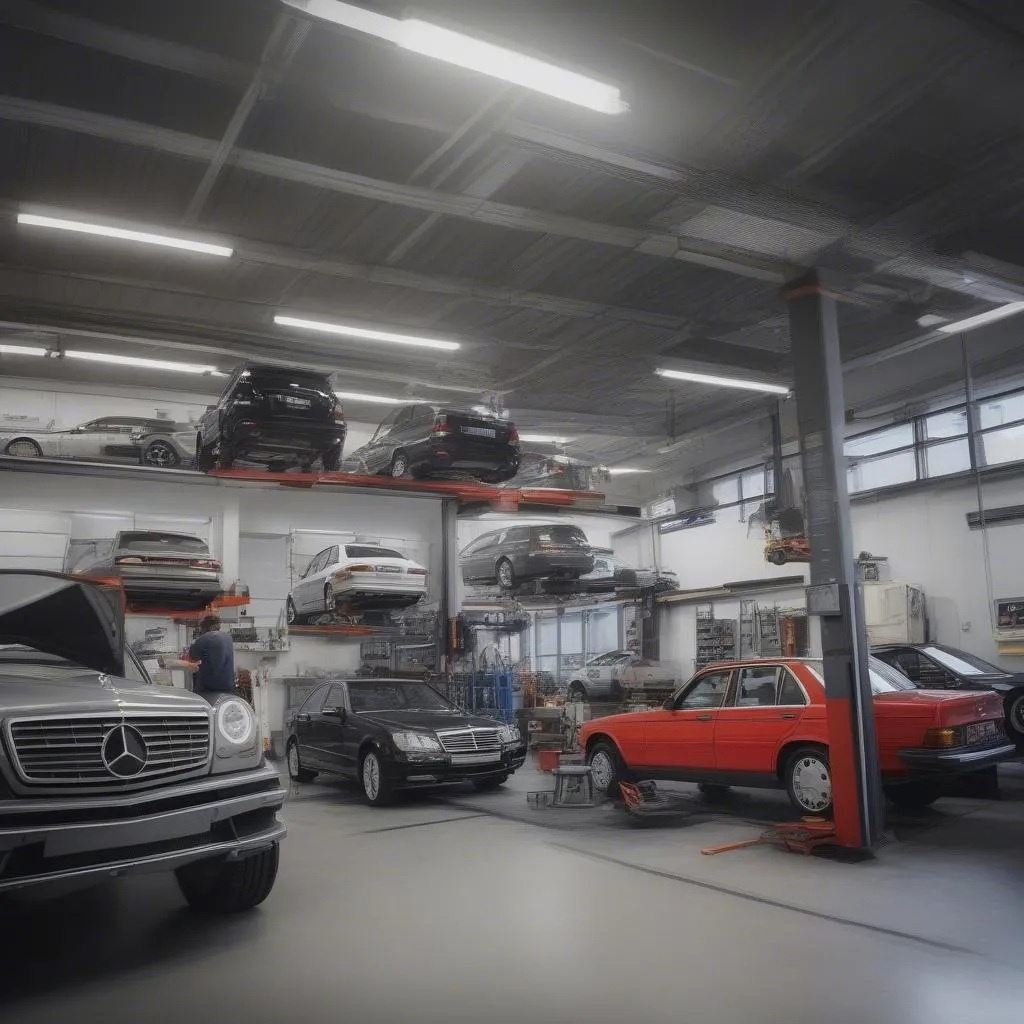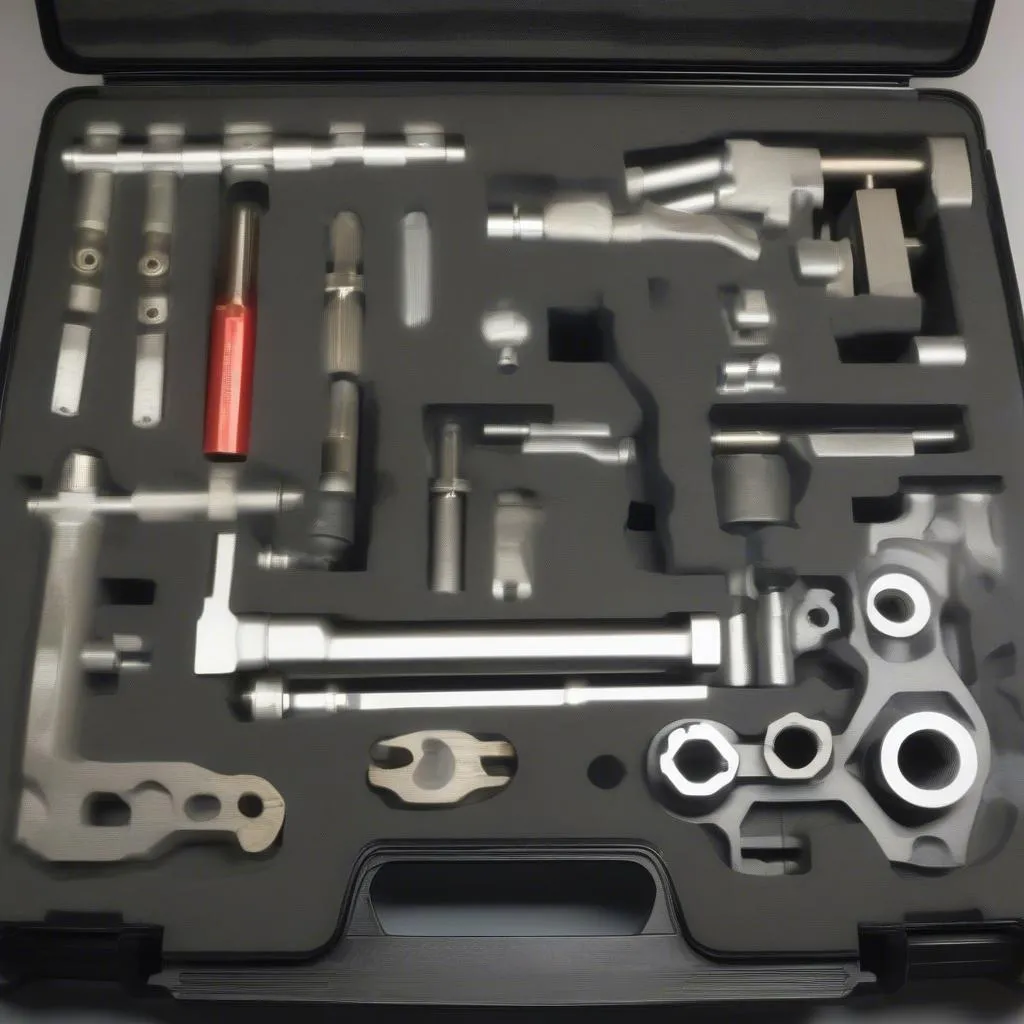A glowing ESP (Electronic Stability Program) light on your 2008 Mercedes E350’s dashboard can be a real head-scratcher. It’s a signal that something isn’t quite right with your car’s sophisticated stability system, which is crucial for maintaining control and safety, especially during slippery conditions or sudden maneuvers. Don’t worry, this guide will walk you through the common causes and solutions to help you regain that feeling of confidence behind the wheel.
Why is My ESP Light On?
Several culprits could be triggering that ESP light on your E350. Let’s break them down:
- Faulty Steering Angle Sensor: This sensor tells your car’s computer which way your steering wheel is turned. If it’s malfunctioning, the ESP system might not receive accurate information, causing the light to illuminate.
- Wheel Speed Sensor Issues: Each wheel has a sensor that monitors its speed. If one of these sensors goes bad, it can confuse the ESP system, leading to the warning light.
- Brake Light Switch Malfunction: Believe it or not, your brake light switch plays a role in ESP functionality. If it’s acting up, the ESP system might not engage properly.
- Low Battery Voltage: A weak battery can wreak havoc on various electrical systems in your car, including the ESP.
- Software Glitch: Like any computer-controlled system, the ESP module itself could experience a software error.
esp-warning-light-dashboard|car dashboard with esp warning light|A close-up photo of a car dashboard with the ESP warning light illuminated in orange, indicating a potential problem with the Electronic Stability Program.
Identifying the Problem
Before you dive into repairs, it’s essential to pinpoint the root cause of the ESP light. Here’s how:
- Check for Other Warning Lights: Is the ESP light accompanied by other warning lights, such as the ABS (Anti-lock Brake System) light? This could indicate a more significant issue.
- Visual Inspection: Take a look at your brake lights. Are they working correctly? Also, inspect the wiring and connections around the wheel speed sensors for any visible damage.
- OBD-II Scanner: The most reliable way to diagnose the problem is to use an OBD-II scanner. This handy device plugs into your car’s diagnostic port and reads trouble codes stored in the ESP module, providing valuable clues about the issue.
mechanic-using-obd2-scanner|mechanic diagnosing car with obd2 scanner|A mechanic in a garage is plugging an OBD-II scanner into a car’s diagnostic port, ready to read trouble codes and identify the cause of the ESP light.
Tools and Materials You Might Need
- OBD-II Scanner: Essential for reading and clearing trouble codes. Consider investing in a high-quality scanner like those offered by Cardiagtech for accurate diagnostics.
- Replacement Sensors: Depending on the diagnosed issue, you might need a new steering angle sensor, wheel speed sensor, or brake light switch.
- Basic Hand Tools: Wrenches, screwdrivers, and pliers for sensor replacement (if necessary).
- Digital Multimeter (Optional): Useful for testing sensor functionality.
car-parts-and-tools|assortment of car parts and tools|An assortment of car parts, including sensors, and tools like wrenches and a multimeter, laid out on a workbench, suggesting a car repair project in progress.
Fixing the ESP Light
1. Address Underlying Issues: If the OBD-II scanner reveals trouble codes related to the battery, charging system, or other components, address those issues first. A low battery, for example, might be the primary trigger for the ESP light.
2. Sensor Replacement: If a faulty sensor is the culprit, replacement is typically the best course of action. Consult your E350’s service manual or a reliable online repair resource for specific instructions on locating and replacing the sensor.
3. Software Update: In some cases, a software update for the ESP module might be necessary. Contact your local Mercedes-Benz dealership or a qualified mechanic with experience in Mercedes-Benz diagnostics and software updates.
4. Brake Light Switch Inspection/Replacement: Check your brake lights. If they are not functioning, the brake light switch could be to blame. This switch is relatively inexpensive and easy to replace.
Frequently Asked Questions
Q: Is it safe to drive with the ESP light on?
A: While your car might still be drivable, a glowing ESP light indicates a potential safety hazard. The system might not function correctly, reducing your control in slippery conditions. It’s best to diagnose and fix the issue promptly.
Q: Can I reset the ESP light myself?
A: In some cases, you can reset the light by disconnecting the battery for a short period. However, this is a temporary fix. If the underlying problem isn’t addressed, the light will return.
Q: How much does it cost to fix an ESP light on a 2008 Mercedes E350?
A: The cost can range from a few hundred dollars for a sensor replacement to over a thousand dollars for more complex issues requiring module replacement or software updates.
Q: Which OBD-II scanner is recommended for my Mercedes-Benz?
A: Consider using a professional-grade scanner or one specifically designed for Mercedes-Benz vehicles, such as those offered by CARDIAGTECH. These scanners provide more in-depth diagnostics and information than generic scanners.
Conclusion
While encountering the ESP light on your 2008 Mercedes E350 can be concerning, understanding its causes and taking the right steps for diagnosis and repair can put you back in control and ensure a safer driving experience. Remember, when in doubt, consult with a qualified mechanic specializing in Mercedes-Benz vehicles. They can provide expert guidance and address any complex issues that may arise.


